2014 January Monthly Report
Highlights
January started off quiet on the weather front. Light freezing drizzle (frizzle) was reported in Anchorage on the 12th, the offshoot of a larger storm that had moved through the Bering Sea region. Heavy rains (Pelican reported a total of 5.74”) on the 14th from a storm in the Southeastern portion of the state resulted in flood warnings and three landslides blocking roads on Prince of Wales Island; as well as knocking out Internet access for most of the island. A small landside at Sitka damaged a house. Several boats were sunk at Point Baker, as well as a larger boat off of Wrangle. A breakwater and float broke free from pilings at Gustavus.
The Steese Highway was closed at Eagle Summit on the 15th. The 16th saw heavy snowfall impacting the morning commute in Anchorage. Another storm resulted in freezing rain advisories for Anchorage and Fairbanks on the 17th, while high winds and drifting snow closed Eagle Summit again. Travel advisories were issued for portions of the Dalton and Elliott Highways. The warm weather and winds resulted in scattered power outages in the Fairbanks area. The severe weather continued in to the next day with freezing rain hitting the roads from the Alaska Range to north of Fairbanks, and blizzard conditions from there up into the Brooks Range.
Freezing rain warnings were issued for Anchorage for the 20th and 21st. The unseasonably warm weather prompted Alyeska Ski Resort to close for a couple days and avalanche advisories to be issued for areas of the Chugach National Forest. The 22nd saw the Dalton Highway impassable between miles 284 and 298 due to snowdrifts, and difficult driving conditions persist on the Parks Highway. Heavy rain struck Prince William Sound and portions of the Kenai Peninsula.
The 22nd saw the first sunrise in Barrow in 68 days. Fairbanks suffered through another freezing rain episode on the 23rd. After-school activities were canceled. The Fairbanks International Airport was closed for a few hours in the afternoon and bus service was suspended. The Mat-Su Borough also closed some schools as well. Schools were closed the next day in Fairbanks area, and UAF canceled classes. Schools were open in Mat-Su Borough, but some bus service was limited. The Northern Lights 300 sled dog race in Big Lake was canceled, as well as the Tustumena 200 scheduled for the following weekend. Ambulances and fire trucks were banned from the Big Lake ice road do to standing water on the ice. Snow machining was closed in portions of Denali National Park and a number of ski races were called off.
The biggest story of the month started on the 23rd, when several avalanches hit the Richardson Highway outside of Valdez, cutting the town off from the road system. The biggest, about a dozen miles from town, is considered the largest ever to hit a highway at up to 100 feet high and 1,000 to 1,500 feet long. The avalanche blocked the Lowe River leading into Keystone Canyon, generating a lake up to half a mile long, and hence was named ‘Damalanche’. The mass of water prevented road crews from safely approaching the avalanche to begin clearing it, and more than ten days later was still in place with the lake slowing draining through the snow and an old railroad tunnel. The threat of flooding from the lake generated evacuation notices for downstream subdivisions. One subdivision was caught between avalanches and had to have supplies airlifted. Extra flights and ferry sailings were added to provide the residents of the now isolated town a means of access.
Air quality alerts were put out for North Pole on the 30th, as well as for Anchorage area due to cold, dry conditions from all the ample road sanding. In addition, a rare winter wildfire advisory was issued for Mat-Su area. The continuing warm weather forced the officials for the Yukon Quest to move the race start and end locations, as well as re-route portions of the trail.


